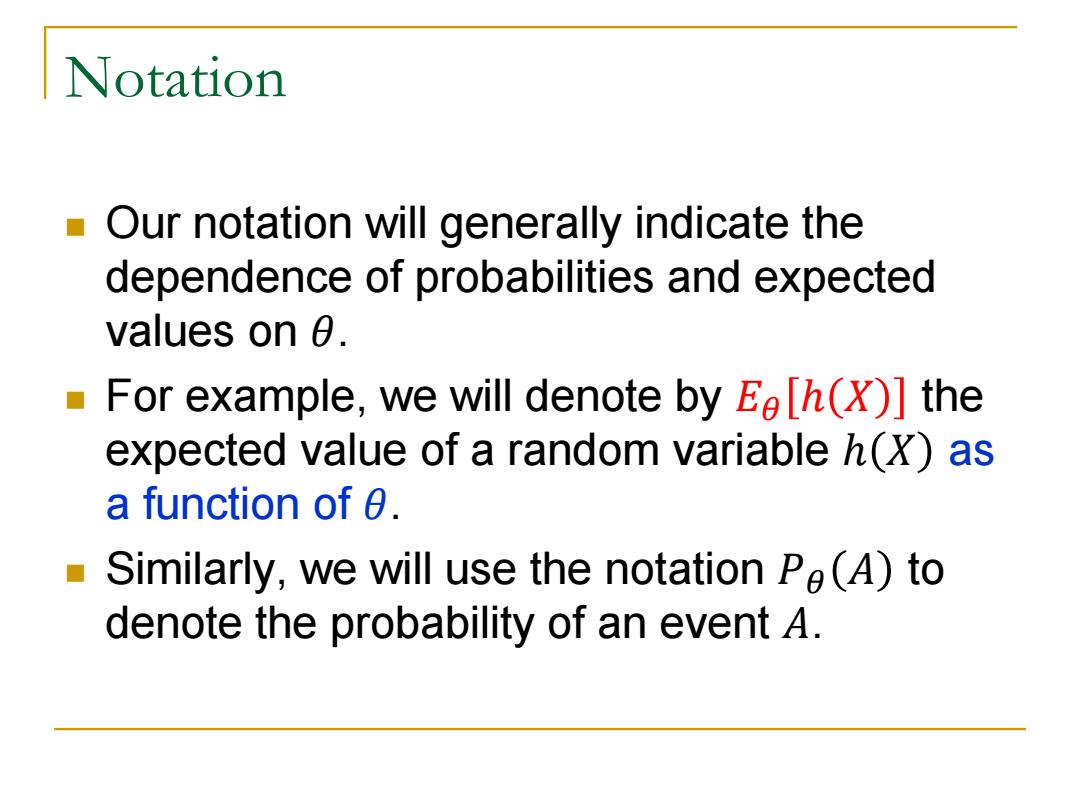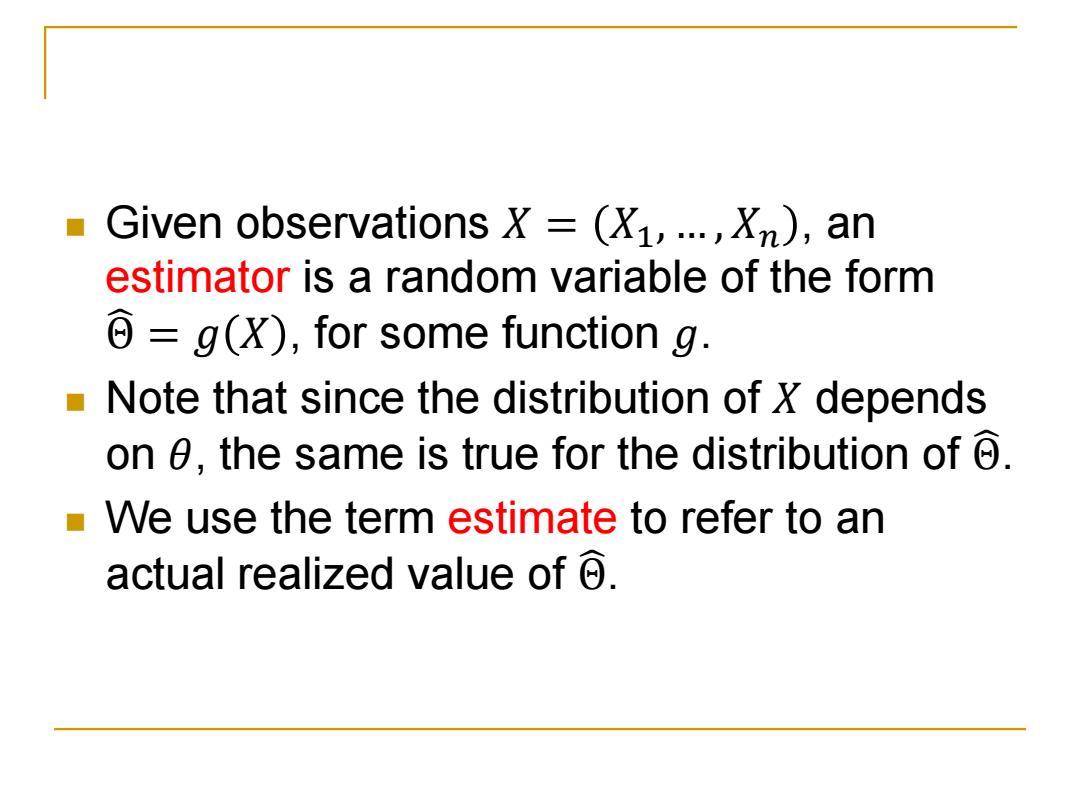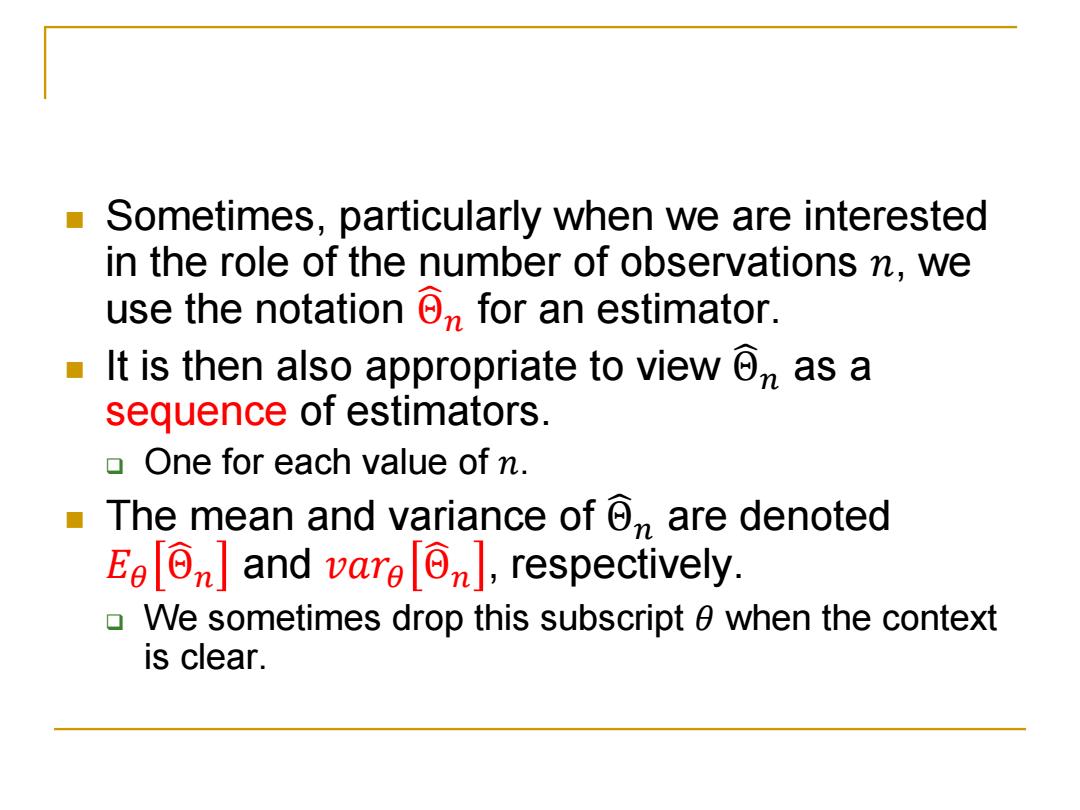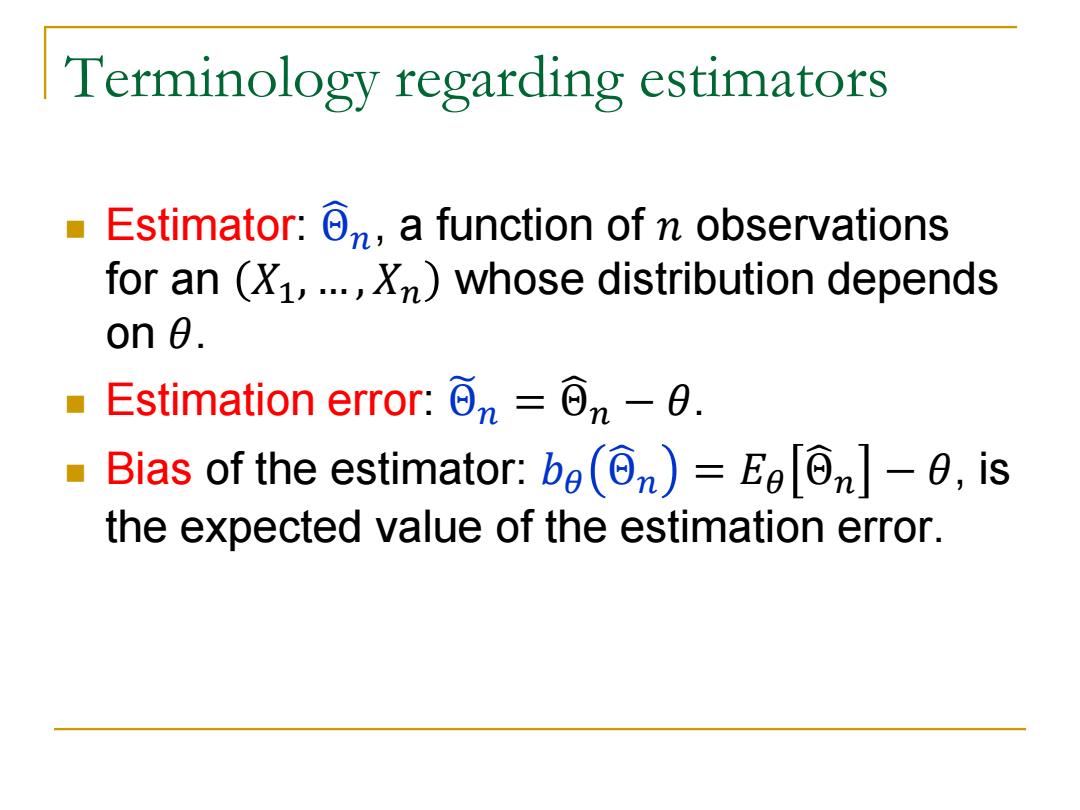
Notation Our notation will generally indicate the dependence of probabilities and expected values on 0. For example,we will denote by Ee[h()]the expected value of a random variable h()as a function of 0. Similarly,we will use the notation Pe()to denote the probability of an event A
Notation Our notation will generally indicate the dependence of probabilities and expected values on 𝜃. For example, we will denote by 𝐸𝜃 ℎ 𝑋 the expected value of a random variable ℎ 𝑋 as a function of 𝜃. Similarly, we will use the notation 𝑃𝜃 𝐴 to denote the probability of an event 𝐴

Content Classical Parameter Estimation Linear Regression Binary Hypothesis Testing Significance Testing
Content Classical Parameter Estimation Linear Regression Binary Hypothesis Testing Significance Testing

■ Given observations (X1,...,Xn),an estimator is a random variable of the form 6=g(x),for some function g. Note that since the distribution of X depends on 0,the same is true for the distribution of 6. We use the term estimate to refer to an actual realized value of⑥
Given observations 𝑋 = 𝑋1, … , 𝑋𝑛 , an estimator is a random variable of the form Θ = 𝑔 𝑋 , for some function 𝑔. Note that since the distribution of 𝑋 depends on 𝜃, the same is true for the distribution of Θ . We use the term estimate to refer to an actual realized value of Θ

Sometimes,particularly when we are interested in the role of the number of observations n.we use the notation,for an estimator. It is then also appropriate to view as a sequence of estimators. One for each value of n. The mean and variance of are denoted Ea[⑥n and vare[⑥nl,respectively. We sometimes drop this subscript 0 when the context is clear
Sometimes, particularly when we are interested in the role of the number of observations 𝑛, we use the notation Θ 𝑛 for an estimator. It is then also appropriate to view Θ 𝑛 as a sequence of estimators. One for each value of 𝑛. The mean and variance of Θ 𝑛 are denoted 𝐸𝜃 Θ 𝑛 and 𝑣𝑎𝑟𝜃 Θ 𝑛 , respectively. We sometimes drop this subscript 𝜃 when the context is clear

Terminology regarding estimators Estimator:n,a function of n observations for an (X1,...,X)whose distribution depends on 0. Estimation error:n=n-0. Bias of the estimator:be(n)=EOn-0,is the expected value of the estimation error
Terminology regarding estimators Estimator: Θ 𝑛, a function of 𝑛 observations for an 𝑋1, … , 𝑋𝑛 whose distribution depends on 𝜃. Estimation error: Θ෩𝑛 = Θ 𝑛 − 𝜃. Bias of the estimator: 𝑏𝜃 Θ 𝑛 = 𝐸𝜃 Θ 𝑛 − 𝜃, is the expected value of the estimation error